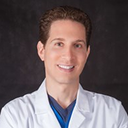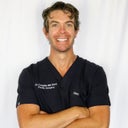Posted underEyelid Surgery q&a
When I Smile or Squint the Thin Skin Under my Eyes Puffs Up into Wrinkly Bags. What Are my Options? (photo)
I have thin skin and dark circles under my eyes. When I am expressionless, I have only faint lines which I don't mind, but when I smile or squint, I have puffy wrinkly bags under my eyes give me the appearance of being 10 years older than I am. One doctor recommended IPL. Is this a good treatment for my issue or are there better options to consider? I am not completely opposed to surgery, but would prefer to try a non-surgical method first. I would appreciate any recommendations .
Answers (9)
From board-certified doctors and trusted medical professionals
Dr. James R. Gordon, MD, FACS, FAAO

Dr. James R. Gordon, MD, FACS, FAAO
Oculoplastic Surgeon, Board Certified in Ophthalmology
Answer
Dr. Benjamin Caughlin, MD, FACS

Dr. Benjamin Caughlin, MD, FACS
Board Certified Facial Plastic Surgeon
Answer
Dr. Cameron Chesnut, MD, FAAD, FACMS

Dr. Cameron Chesnut, MD, FAAD, FACMS
Dermatologic Surgeon, Board Certified in Dermatology
Answer
Dr. Houtan Chaboki, MD

Dr. Houtan Chaboki, MD
Board Certified Facial Plastic Surgeon
Answer
Dr. Robert W. Sheffield, MD
Dr. Robert W. Sheffield, MD
Board Certified Plastic Surgeon
Answer
Dr. William Portuese, MD
Dr. William Portuese, MD
Board Certified Facial Plastic Surgeon
Answer
Dr. Anita Mandal, MD
Dr. Anita Mandal, MD
Board Certified Facial Plastic Surgeon
Answer
Dr. Stephen Weber MD, FACS
Dr. Stephen Weber MD, FACS
Board Certified Facial Plastic Surgeon
Answer
Dr. Amiya Prasad, MD - Account Suspended
Dr. Amiya Prasad, MD - Account Suspended
Oculoplastic Surgeon, Board Certified in Ophthalmology
Answer
More Eyelid Surgery Questions
See all Eyelid Surgery Q&AWE SEND PRETTY
EMAILS
What’s trending? Who’s turning heads? Which TikTok myths need busting? We’ve got you. No fluff, no gatekeeping—just real talk. Get our free, unfiltered newsletter.